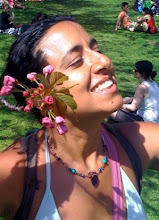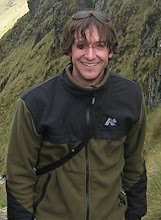 Steve-o (right) is helping Mr. Brad Lancaster (left, holding the filter) with a demonstration on installing Rainwater catchment barrels. We were very fortunate to have Brad come and hang out with us for over a week all the way from Tucson, Arizona. While he was here, he gave three presentations on Residential Rainwater and Greywater Harvesting. Not only is Brad extremely charming, but he is very smart. He even wrote a book! It's called Rainwater Harvesting for Drylands and Beyond. He autographed my copy.
Steve-o (right) is helping Mr. Brad Lancaster (left, holding the filter) with a demonstration on installing Rainwater catchment barrels. We were very fortunate to have Brad come and hang out with us for over a week all the way from Tucson, Arizona. While he was here, he gave three presentations on Residential Rainwater and Greywater Harvesting. Not only is Brad extremely charming, but he is very smart. He even wrote a book! It's called Rainwater Harvesting for Drylands and Beyond. He autographed my copy.
 This is Josh Kearns. He does a whole lot of different things. Read how incredible he is here.
This is Josh Kearns. He does a whole lot of different things. Read how incredible he is here.He also gave a presentation at AVI about taking the water that comes off of our roof( which is plastered with asphalt shingles) and turning it into drinking water. He used sand, gravel, carbon from the aquarium supply store and a five gallon bucket. We were lucky to have him with us for about a week too. He will be down south thru the summer before he heads back to Thailand this fall. We miss you already, Josh.
 Mr. Chuck Marsh and Brad having a "moment". AVI is just one big cuddle puddle. Mr. Marsh is a very busy, experienced Permaculture gardener who will be presenting during our certification courses.
Mr. Chuck Marsh and Brad having a "moment". AVI is just one big cuddle puddle. Mr. Marsh is a very busy, experienced Permaculture gardener who will be presenting during our certification courses.
 Ian is a neighbor and he is also taking the Permaculture Certification Course with us. We have about thirty people in our class and we meet the last weekend of every month thru October to cover the 72 hour course.
Ian is a neighbor and he is also taking the Permaculture Certification Course with us. We have about thirty people in our class and we meet the last weekend of every month thru October to cover the 72 hour course.

Janell and Mrs. Barbara, another neighbor, last weekend during the workshops.
 Josh building and demonstrating our rainwater filter.
Josh building and demonstrating our rainwater filter.






















